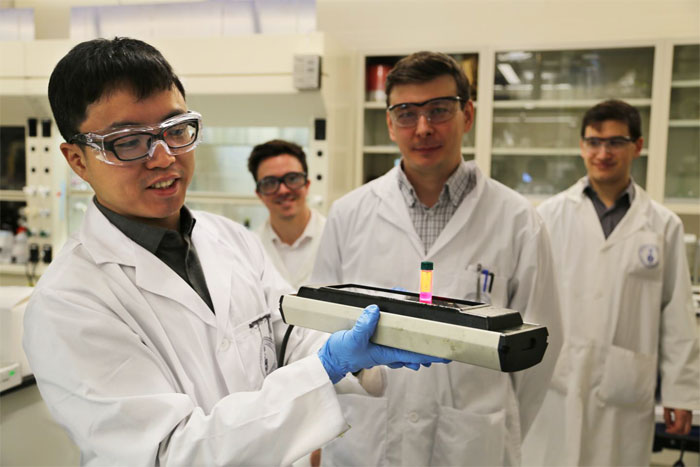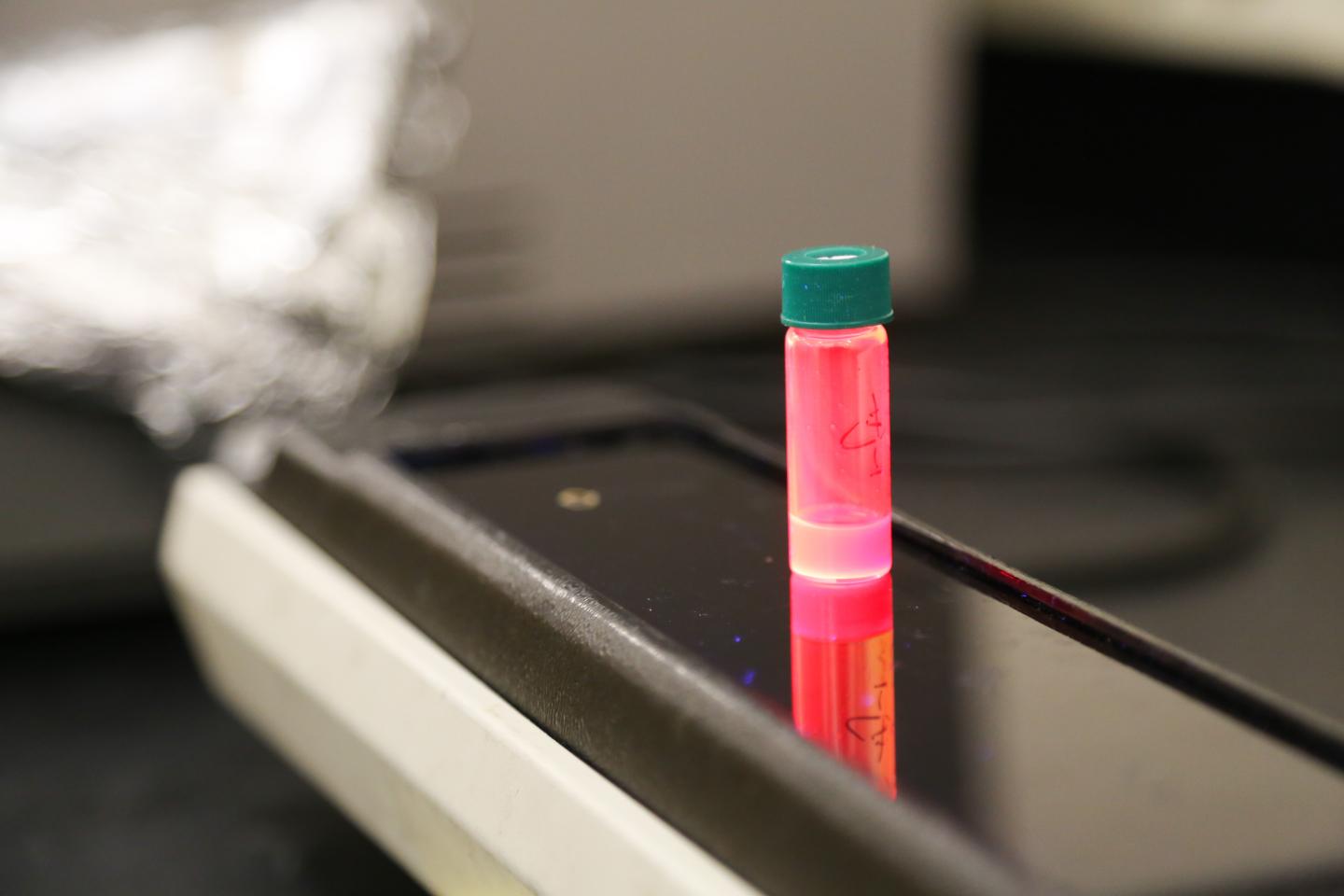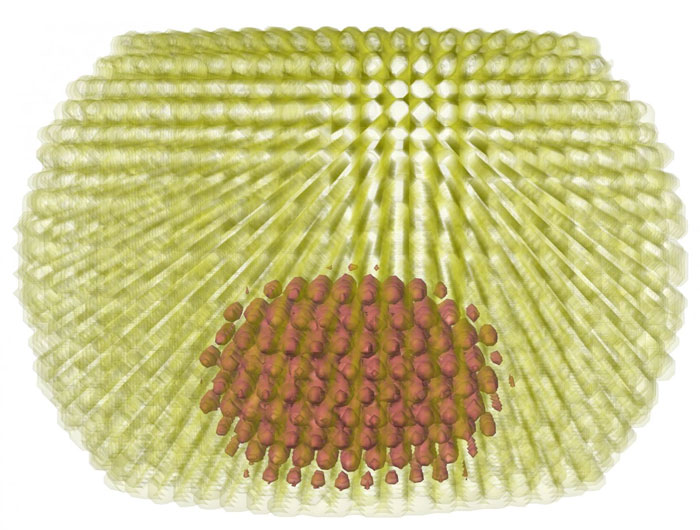A novel method for fabricating lasers uses saucer-shaped quantum dots (QDs) to produce continuous laser light that could be brighter, less expensive and more tunable than current devices. Although the ability to produce laser light using colloidal QDs (CQDs) was first demonstrated more than 15 years ago, commercial application has remained elusive because a very large amount of light is needed to excite the QDs, leading to heating loss and overheating. Most QD lasers are limited to pulses of light lasting just a few nanoseconds.

Postdoctoral fellow Fengjia Fan (ECE) shows off a vial of colloidal quantum dots that glow red when excited by UV light. Fan and colleagues Randy Sabatini, Alex Voznyy and Kris Bicanic are using the quantum dots to develop inexpensive, brighter lasers that can be tuned to any frequency in the visible range. Courtesy of Kevin Soobrian/University of Toronto Engineering.
An international research team from the University of Toronto, Vanderbilt University the Los Alamos National Laboratory, the University of Ottawa and the University of New Mexico achieved continuous pulses in a QD laser by changing the shape of the QDs rather than their size. The team created QDs with a spherical core and a shell shaped like a flying saucer — a spherical shape known as an oblate spheroid. The mismatch between the shape of the core and shape of the shell introduced a tension that affected the electronic states of the QD, lowering the amount of energy needed to trigger the laser.

This solution of quantum dots glows bright red when in absorbs light from a UV lamp underneath. Researchers from the University of Toronto Engineering are optimizing these nanoparticles to create brighter lasers that use less energy than current models. Courtesy of Kevin Soobrian/University of Toronto Engineering.
The ability to create QDs that are not in danger of overheating could enable a QD laser to pulse continuously.
To create the QDs with the special shape, the team added capping molecules into their CQD solution, which allowed them to control the shape of the particles to obtain the desired properties.
“Solution-based processing greatly reduces the cost of making quantum dots,” said researcher Fengjia Fan. “It will also make it easier to scale up production, because we can use techniques already established in the printing industry.”

This computer-generated model shows the spherical core of the quantum dot nanoparticle (in red) along with the 'flying saucer' shape of the outer shell (in yellow). The tension in the core induced by the shell affects the electronic states and lowers the energy threshold required to trigger the laser. Courtesy of Dr. Alex Voznyy/University of Toronto Engineering.
“We were impressed not only by the engineered structure itself but also by the level of uniformity they have achieved,” said Sandra Rosenthal, director of the Vanderbilt Institute for Nanoscale Science and Engineering. “[Professor Ted] Sargent's team has managed to create quantum dots with a unique and elegant structure. This is exciting research.”
The team has more work to do before their discovery is ready for commercialization.
“For this proof-of-concept device, we’re exciting the quantum dots with light,” said researcher Randy Sabatini. “Ultimately, we want to move to exciting them with electricity. We also want to scale up the power to milliwatts or even watts. If we can do that, then it becomes important for laser projection.”
The ability to produce laser light at any frequency from a single material, such as CQDs, could lead to novel tools for exploring biochemical reactions in cells and brighter video displays.
The research was published in Nature (doi: 10.1038/nature21424).